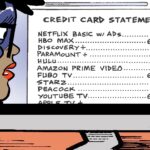 Is a Facebook video impression worth the same as in video-on-demand?
Is a Facebook video impression worth the same as in video-on-demand?
This was one of many questions posed to YouTube and Facebook reps during Tuesday’s TV Of Tomorrow Show in New York.
Patrick Harris, Facebook’s director of global agency development, argued that “the CMOs we serve are not thinking about the value of specific impressions. They’re thinking about branding and sales lift and they’re moving from channels to audiences and trying to do it with comparable currencies.”
Ultimately, how can Facebook – or any other video provider, for that matter – compare impressions without standard metrics across digital and connected TV?
Harris conceded that while Facebook is working with the Media Rating Council (MRC), it’s still facing difficulties defining a cross-platform video measurement standard.
Facebook says ‘No Thanks’ to content development
Unlike Amazon, AOL and YouTube – which are all developing original programming, Harris insists “Facebook wants to be a friend to content creators.”
In other words, while Facebook is priming its platform as a place to discover great content, it’s not discounting the value of live TV. Harris acknowledged that while other portals like AOL and Yahoo are going after original programming, “we are not actively focused on it.”
Instead, Harris sees Facebook and the Instagram property as more of a means to distribute and amplify others’ original content.
For instance, the producers of Furious 7, the next installment in the Fast and the Furious saga, tapped Facebook to promote the release of the first trailer, and drove 100 million unique views two days before the trailer hit television.
“Finding premium audiences is increasingly difficult and we’re starting to see studios adopt [digital] in conjunction with above the line creative in order to do that,” said Harris.
Carolyn Everson, the company’s VP of global marketing solutions, supported that claim during Advertising Week this fall where she shared the stage with NBC Entertainment, and revealed Facebook had exceeded one billion video views per day, 65% of which were mobile.
“Video will be the single biggest story for our industry heading into next year,” she said. “We have the data and insights to get the right video to the right people.” This was made possible in part by Facebook’s acquisition of video supply side platform LiveRail last June, along with combined formats like auto-play video in mobile app install ads and better cross-device targeting on third-party apps and sites with the relaunch of ad server Atlas.
One advertiser, Coca-Cola’s VP of Global Connections Ivan Pollard, referred to the most compelling aspect of Facebook’s video value proposition: “we’re at an inflection point where brands can unleash the power of film with the precision of Facebook where it’s not an ‘either or’ with TV and video.”














